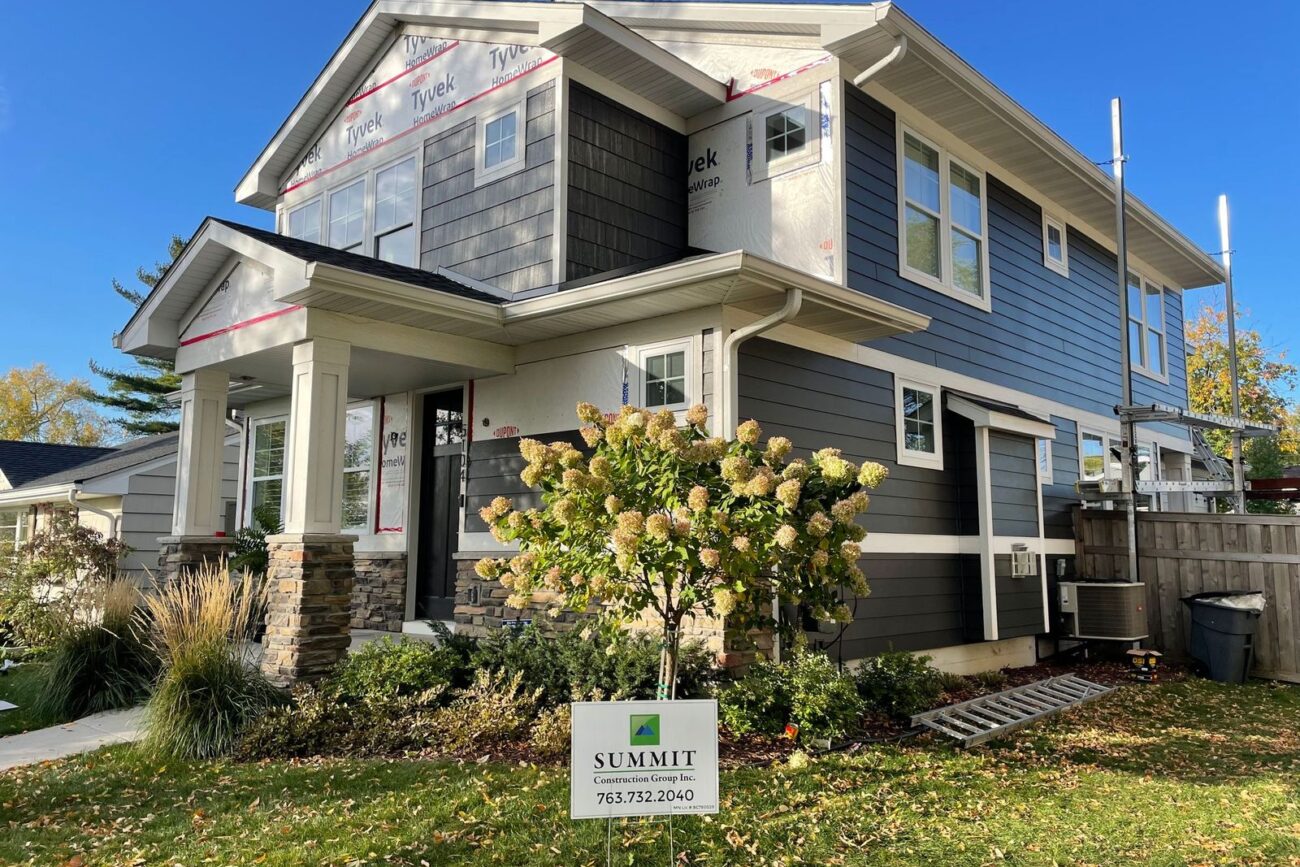When it comes to your home’s exterior, siding is more than just a pretty façade. It shields your house from Minnesota’s unpredictable climate, helps regulate indoor temperatures, and significantly impacts curb appeal. Still, many homeowners aren’t sure how often they should reseal, repaint, or consider siding replacement altogether.
With the extreme weather fluctuations in the Midwest, like blazing summers, icy winters, and springtime moisture, regular siding maintenance is a must.
Neglecting your siding can lead to water infiltration, energy loss, mold growth, and even structural damage. And while some siding types are known for being low-maintenance, every material requires some level of care to ensure it performs well over time.
A well-maintained exterior protects your house from the elements and also preserves its value and aesthetic charm. Whether you’re dealing with aging wood siding, vinyl panels that have seen better days, or composite materials that need attention, understanding the right siding maintenance schedule can prevent costly surprises down the road.
In this guide, we’ll walk you through maintenance schedules by siding type, red flags that indicate damage, how to care for your siding step-by-step, and when upgrading to new materials might be the smarter long-term investment.
Why Regular Siding Maintenance Is Essential
Your siding is your home’s first level of protection against rain, snow, UV rays, and insects. Over time, even the most durable siding can weaken if not properly cared for. Preventive upkeep, like sealing, cleaning, and repairing small issues, can prevent big-ticket problems such as water infiltration, mold growth, and structural damage.
And let’s not forget curb appeal. Well-maintained siding boosts property value and visual appeal, which is important if you’re thinking about resale. Best of all, staying on top of your siding maintenance schedule can save you thousands by delaying or avoiding a full siding replacement.
How Often Should You Maintain or Reseal Different Siding Types?
Not all siding is created equal. Each material comes with its own care timeline and upkeep recommendations. Discover how often to seal siding below. Sticking to the right maintenance routine can extend your siding’s lifespan, enhance its appearance, and save you from premature siding replacement.
Vinyl Siding Care
Vinyl siding is one of the most low-maintenance options available. You should wash it at least once a year to remove dirt, mold, and mildew. For trim and joints, inspect and reseal siding every 5–10 years with caulk to prevent air or moisture from sneaking in.
Tip: Pay attention to caulk around windows and doors. It often degrades before the siding itself.
Wood Siding Care
Wood siding offers timeless charm, but it demands regular attention. Most homeowners should plan on repainting wood siding or applying wood siding sealant every 3–5 years to prevent rot and UV damage. Wood is also more vulnerable to pests and moisture, so visual inspections should be frequent.
Fiber Cement Siding Care
Durable and increasingly popular, fiber cement siding requires less frequent care. A good paint job can last 10–15 years, but you’ll need to re-caulk joints every 2–3 years to maintain its moisture-resistant siding qualities.
Composite or Engineered Wood Care
Composite materials like engineered wood or polymer blends are built to last. Composite siding maintenance is relatively minimal. Resealing is typically only necessary every 8–10 years. Many modern options come prefinished with lengthy warranties.
Read More: Why Hardie Board Siding Is a Top Choice for Homeowners
Signs It’s Time for Repairs or Replacement
Even with proper maintenance, time takes its toll. Here are clear siding replacement signs to watch for:
- Peeling paint or faded colors
- Warped, cracked, or swollen panels
- Rotting or soft spots in wood siding
- Mold, algae, or mildew growth
- Caulk pulling away from joints
- Spiking energy bills (often from insulation failure)
- Bubbling drywall or peeling interior paint, which is often a sign of water infiltration
Staying vigilant helps with home exterior upkeep and ensures your siding continues to protect your house exterior effectively.
Step-by-Step: Resealing or Repainting Wood Siding
Wondering how to maintain house siding between professional inspections or replacements? Follow these steps:
- Inspect & Clean
Use a garden hose or pressure washer (low setting) to remove grime, mold, and chalky residue. - Scrape & Sand
For painted surfaces, remove any peeling areas. Old wood siding sealant should be stripped and smoothed. - Patch & Caulk
Fill any holes or cracks with weatherproof exterior caulk. Reseal around windows, doors, and trim. - Prime (if needed)
Apply primer to bare wood siding. - Paint or Seal
Use top-quality exterior paint or sealing products designed for your wood siding material. - Dry & Inspect
Let everything dry completely, then check for missed spots or uneven coverage.
Modern Siding Materials That Minimize Maintenance
If you’re tired of repainting and resealing, it might be time to explore durable siding materials that are designed to go the distance.
- Fiber Cement: Now available in pre-finished options with factory-applied coatings that last 15+ years.
- Insulated Vinyl: Boosts energy efficiency while resisting fading, warping, and cracking.
- Polymer Composites: High-end, engineered is considered one of the best pest- and moisture-resistant siding, with some brands offering 30+ year warranties.
These materials offer energy-efficient siding options and are ideal for homeowners seeking a low-maintenance siding solution with long-term peace of mind.
When to Choose Siding Replacement Instead of Repairs
So, when is it smarter to stop patching and start over with full siding replacement?
- Your current siding is over 20–25 years old
- Maintenance costs exceed 50% of what new siding would cost
- There’s widespread moisture or structural damage
- You’re noticing persistent drafts or high utility bills
- You want to upgrade your curb appeal and energy performance
Older materials often lack insulation and moisture barriers, making them less efficient and more prone to issues. Upgrading to modern siding can reduce energy bills, improve weather resistance, and increase resale value.
Take Time to Invest in Your Home’s Exterior
Your siding plays an important role to protect the house exterior. It keeps your home safe, efficient, and beautiful. Following a solid siding maintenance schedule helps prolong its life, but knowing when to reseal, repaint, or opt for siding replacement is key to smart homeownership.
Whether you’re managing yearly upkeep or weighing the cost-benefit of a full upgrade, taking care of your siding is one of the best ways to protect your house exterior and enhance its value.
Ready to evaluate your siding? Contact Summit Construction Group for a personalized inspection, repair plan, or siding replacement estimate tailored to Minnesota homes. You can also explore our siding FAQs to learn more about your options.


